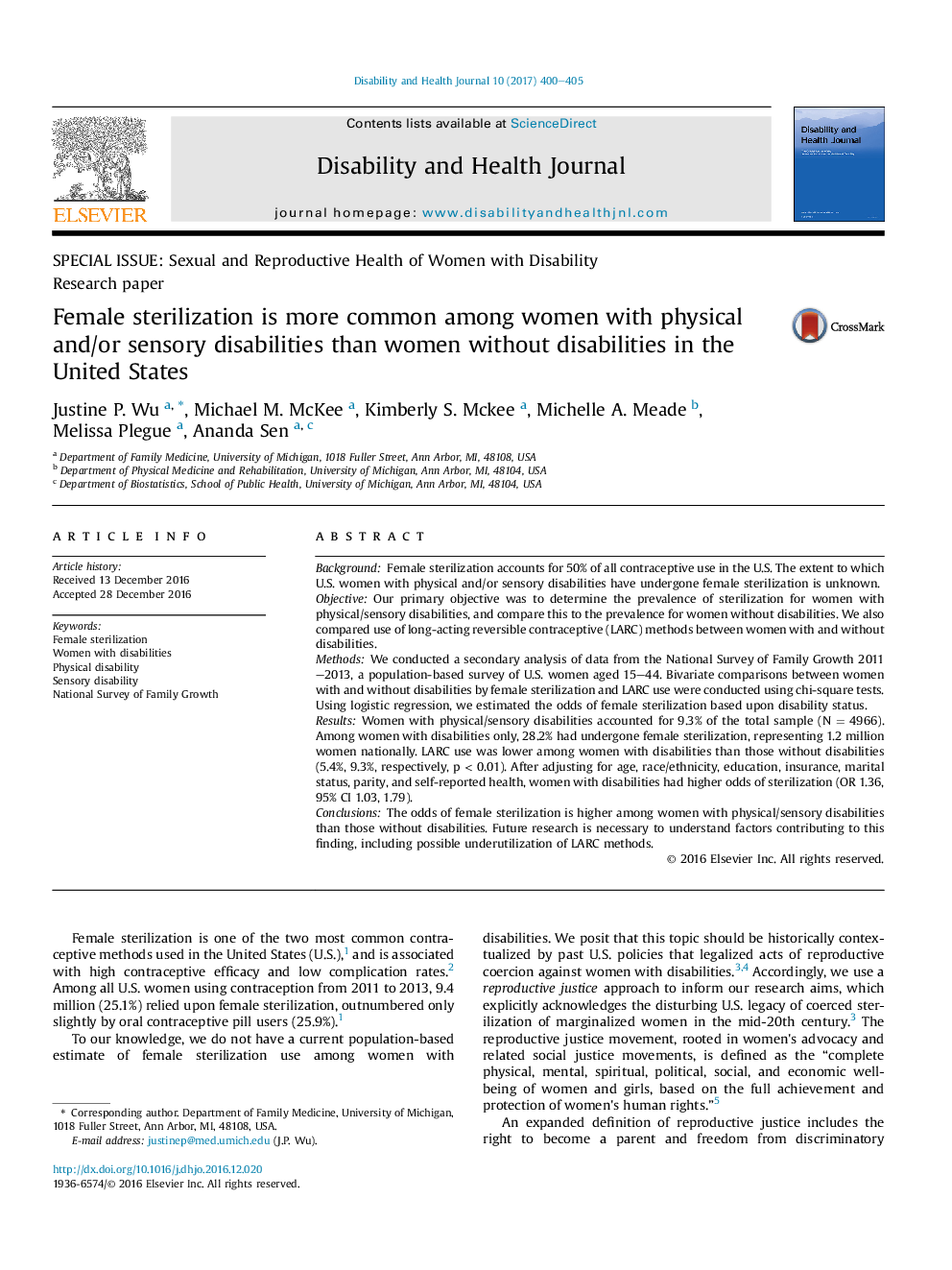| Article ID | Journal | Published Year | Pages | File Type |
|---|---|---|---|---|
| 5723255 | Disability and Health Journal | 2017 | 6 Pages |
BackgroundFemale sterilization accounts for 50% of all contraceptive use in the U.S. The extent to which U.S. women with physical and/or sensory disabilities have undergone female sterilization is unknown.ObjectiveOur primary objective was to determine the prevalence of sterilization for women with physical/sensory disabilities, and compare this to the prevalence for women without disabilities. We also compared use of long-acting reversible contraceptive (LARC) methods between women with and without disabilities.MethodsWe conducted a secondary analysis of data from the National Survey of Family Growth 2011-2013, a population-based survey of U.S. women aged 15-44. Bivariate comparisons between women with and without disabilities by female sterilization and LARC use were conducted using chi-square tests. Using logistic regression, we estimated the odds of female sterilization based upon disability status.ResultsWomen with physical/sensory disabilities accounted for 9.3% of the total sample (N = 4966). Among women with disabilities only, 28.2% had undergone female sterilization, representing 1.2 million women nationally. LARC use was lower among women with disabilities than those without disabilities (5.4%, 9.3%, respectively, p < 0.01). After adjusting for age, race/ethnicity, education, insurance, marital status, parity, and self-reported health, women with disabilities had higher odds of sterilization (OR 1.36, 95% CI 1.03, 1.79).ConclusionsThe odds of female sterilization is higher among women with physical/sensory disabilities than those without disabilities. Future research is necessary to understand factors contributing to this finding, including possible underutilization of LARC methods.
